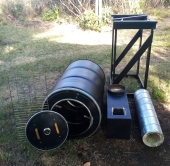
 6
6




 5
5




Silence is Golden
For all your RMH needs:
dragontechrmh.com
 5
5





 2
2




Works at a residential alternative high school in the Himalayas SECMOL.org . "Back home" is Cape Cod, E Coast USA.
 6
6




The holy trinity of wholesomeness: Fred Rogers - be kind to others; Steve Irwin - be kind to animals; Bob Ross - be kind to yourself




John Daley Bendigo, Australia The Enemy of progress is the hope of a perfect plan
Benefits of rainfall collection https://permies.com/t/88043/benefits-rainfall-collection
GOOD DEBT/ BAD DEBT https://permies.com/t/179218/mortgages-good-debt-bad-debt
 3
3




 4
4




Where there is Liberty, there is Christ!
 5
5




'What we do now echoes in eternity.' Marcus Aurelius
How Permies Works Dr. Redhawk's Epic Soil Series








 1
1




'What we do now echoes in eternity.' Marcus Aurelius
How Permies Works Dr. Redhawk's Epic Soil Series
 1
1




 1
1




Silence is Golden
For all your RMH needs:
dragontechrmh.com




 2
2




Silence is Golden
For all your RMH needs:
dragontechrmh.com
 1
1




 1
1





| I agree. Here's the link: http://stoves2.com |





